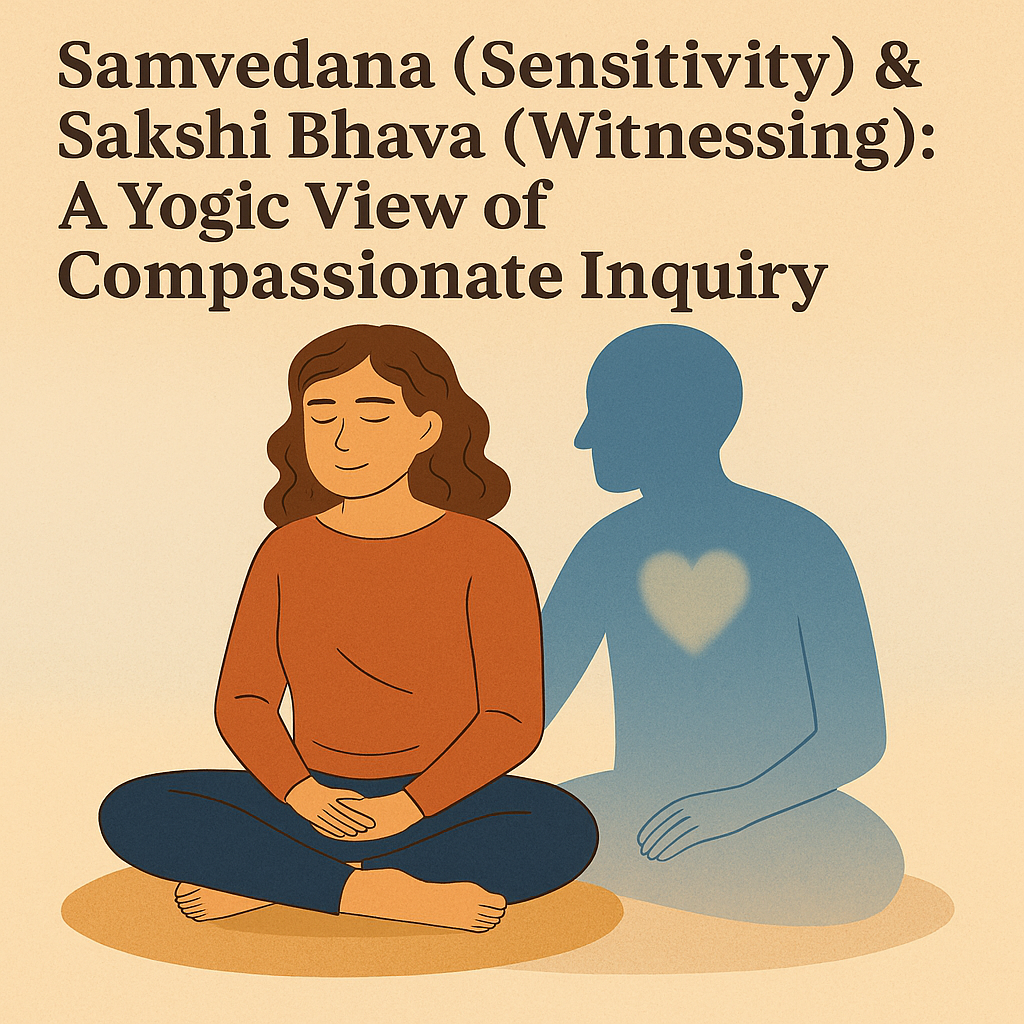
Samvedana (Sensitivity) & Sakshi Bhava (Witnessing): A Yogic View of Compassionate Inquiry
How ancient yogic wisdom aligns with modern emotional healing
The Yogic Language of Healing
In Yoga philosophy, two powerful concepts guide inner growth:
- Samvedana — deep sensitivity and empathy, the ability to truly feel another’s experience.
- Sakshi Bhava — the state of being a witness, observing without attachment or judgment.
When combined, they create a path of compassionate awareness — the very essence of what we practice in Compassionate Inquiry (CI).
Samvedana: Sensitivity with Compassion
Samvedana is not just “feeling emotional.”
It is the refined sensitivity that allows us to:
- Recognize emotions — in ourselves and others.
- Respond with empathy instead of reactivity.
- Be present to pain without turning away or suppressing it.
In healing work, Samvedana opens the door — it helps us connect to the subtle messages of the body and mind, creating the safety needed for exploration.
Sakshi Bhava: The Power of Witnessing
Sakshi Bhava — often translated as “witness consciousness” — is the ability to observe without becoming entangled.
It teaches us to:
- Step back from our thoughts and emotions, seeing them as passing experiences.
- Create space between stimulus and response, breaking cycles of automatic reaction.
- Allow insights to arise naturally instead of forcing change.
In Compassionate Inquiry, this is exactly what we practice — witnessing our stories, sensations, and emotions with openness, so healing can unfold gently.
Where Yoga & Compassionate Inquiry Meet
When we integrate Yoga with CI:
- Samvedana guides us to listen deeply — to ourselves and to others — with kindness and openness.
- Sakshi Bhava helps us hold our experiences lightly, without judgment or attachment.
This blend creates a safe, transformative space where emotional pain can be explored, understood, and released.
How I Bring This to My Work
In The Art of Witnessing using Compassionate Inquiry, sessions often include:
- Gentle yoga practices to awaken body sensitivity.
- Grounding breathwork to quiet the mind.
- Compassionate dialogue to bring subconscious emotions into awareness.
- Witnessing exercises to observe without judgment — practicing Sakshi Bhava in real time.
This fusion allows you to experience Yoga philosophy not just on the mat but in your emotional healing journey.
Final Thoughts
Ancient yogic wisdom reminds us:
“You are not your pain. You are the witness of your experience.”
When we meet our inner world with Samvedana and Sakshi Bhava, we create the conditions for true healing — just as Compassionate Inquiry invites us to do.
If you’re ready to explore these principles in a safe, supportive space, I invite you to experience:
The Art of Witnessing using Compassionate Inquiry & Yogic Practices — where ancient wisdom meets modern healing.
With presence,
Amulya Parmesh
Join Glitz Arogya and begin a journey of authentic living — through the Art of Witnessing.
About the Author :
Amulya Parmesh, MSc Psychology (BPS), YCB-certified Yoga Teacher & Evaluator, and Holistic Therapist (CI, PRT, CBT), is the founder of the Glitz Arogya Mind-Body Program. She brings a unique blend of scientific understanding and yogic wisdom to her practice. Glitz Arogya is dedicated to empowering individuals to achieve holistic well-being through integrated mind-body therapies.

